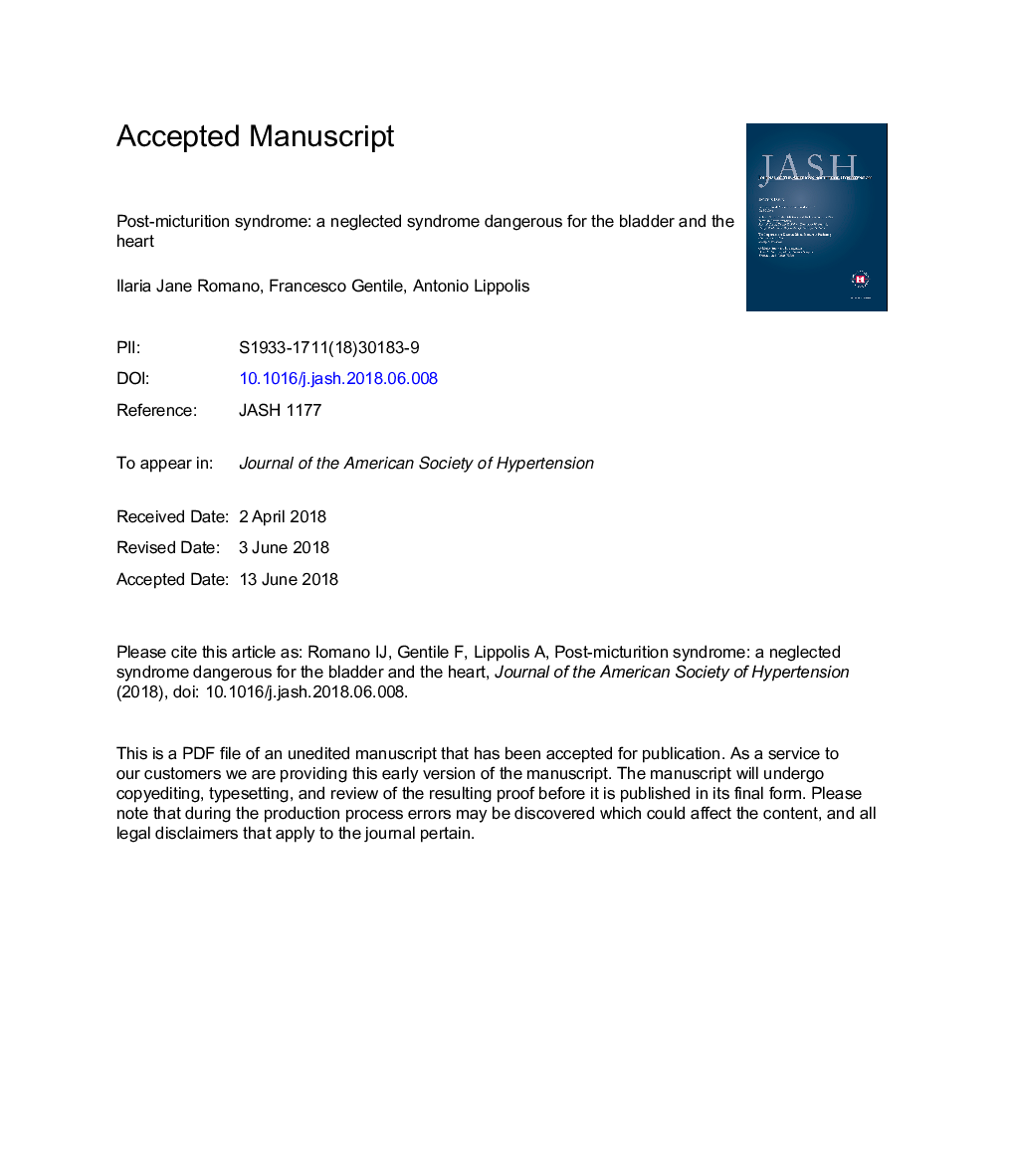| Article ID | Journal | Published Year | Pages | File Type |
|---|---|---|---|---|
| 10214030 | Journal of the American Society of Hypertension | 2018 | 9 Pages |
Abstract
Postmicturition syndrome refers to symptoms caused by overdistension of the bladder or micturition. Bladder paraganglioma is a rare neuroendocrine neoplasm, which arises from the chromaffin tissue of the sympathetic nervous system embedded in the muscle layer of the bladder wall. Clinical presentation of catecholamine-secreting paragangliomas may mimic that of hyperfunctioning adrenal pheochromocytoma. Typical symptoms such as sweating, palpitations, headache, nausea, hypertension, or flushing are due to catecholamine release and are related to micturition or bladder overdistension. We herein report the case of a 22-year-old woman admitted to the Emergency Department because of cranial trauma secondary to a car accident. She referred history of micturition-related headache, nausea, sweating, and increase in blood pressure since she was 13Â years old. The neurological investigation was normal. No urogenital tract investigation was performed and, on admission, blood pressure was 190/125Â mmHg. During hospitalization, abdominal ultrasonography, performed to rule out secondary hypertension, unexpectedly showed a large vascular soft tissue mass in the bladder wall, compatible with a paraganglioma. Twenty-four hours of urinalysis of catecholamines revealed high values of urine metanephrines. Abdominal magnetic resonance imaging and histopathological evaluation of the surgical specimen, following resection of the bladder lesion, confirmed the diagnosis. Our case underlines the importance not to underestimate symptoms compatible with postmicturition syndrome, especially in young patients, to make early diagnosis of bladder paraganglioma.
Keywords
Related Topics
Life Sciences
Neuroscience
Endocrine and Autonomic Systems
Authors
Ilaria Jane MD, Francesco MD, Antonio MD,
